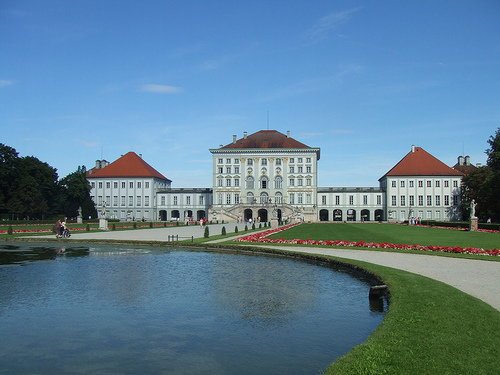Nymphenburg Porcelain
Nördliches Schlossrondell in Nymphenburg
If you didn't know porcelain and ceramics differ. Ceramics is ascribed to all fired clay. Porcelain is a distinctive class of clay refined with rich texture that can be fired exceeding normal ceramic processing temperatures.
Before the 18th century porcelain was considered " white gold " in Europe. Aristocrats and prestige folk alike collected fine porcelain imported from China. During the 18th century a movement had began to make fine porcelain in Europe. As a result porcelain factories began to flourish throughout 1800's.
Nymphenburg porcelain was a unique one of those factories. Nymphenburg porcelain is a well known company that has been producing porcelain for over 260 years. Maximilian III Joseph, Prince-Elector of Bavaria, began a porcelain factory in 1756 and six years later he moved it to a Baroque palace ( Nymphemburg Palace) in Munich. Many artists from Nymphenburg received royal patronage throughout the 18th & 19th centuries. Nymphenburg makes historical replicas and sculptures, while also maintaining modern styles in tableware.

The Nymphenburg Palace
The palace was commissioned to be built by the prince-electoral couple Ferdinand Maria & Henriette Adelaide of Savoy in 1664. The pavilion was completed in 1675. Further editions to the structure were commissioned up until 1826 as shown on picture.


Fine Porcelain
Nymphenburg has always had a fine quality to it. Whether in color or not, it's pristine punctuality in the art makes it worth the price as they create one of a kind pieces. Collector's from all over the world are constantly looking for the fine porcelain.
Check out some Nymphenburg masterpieces.



